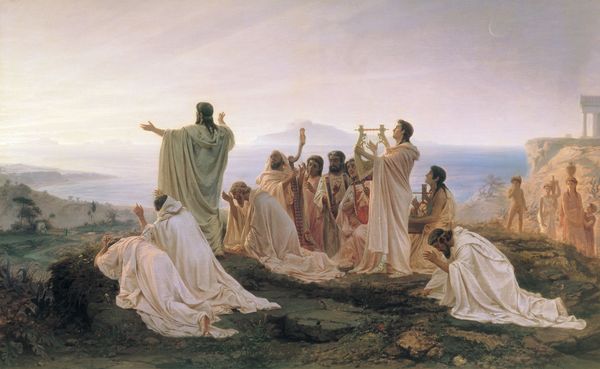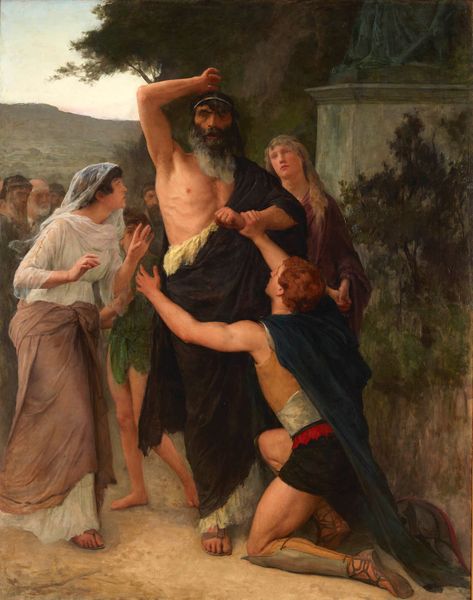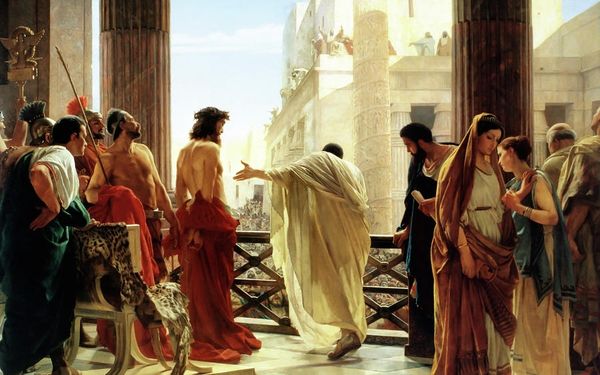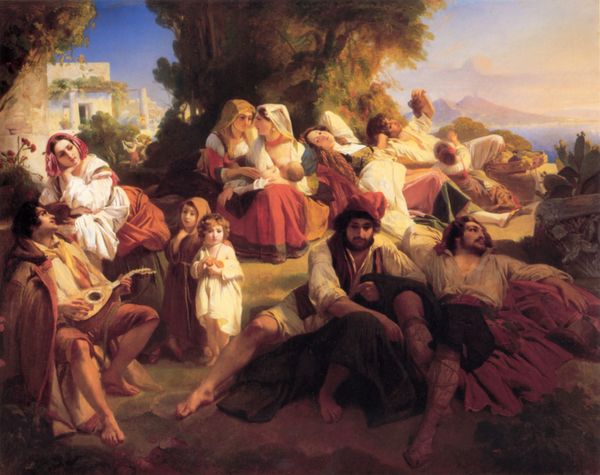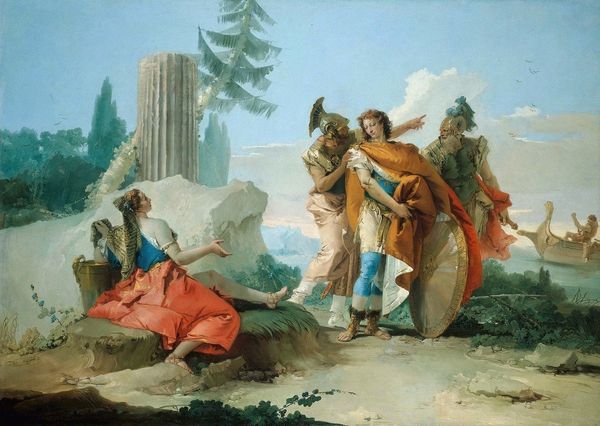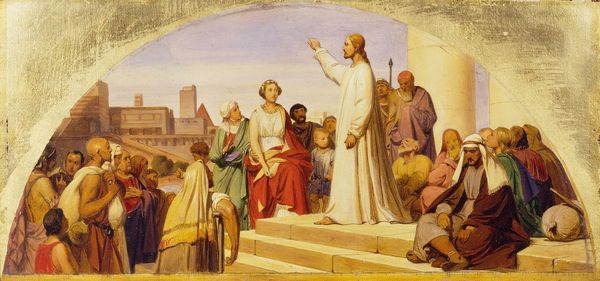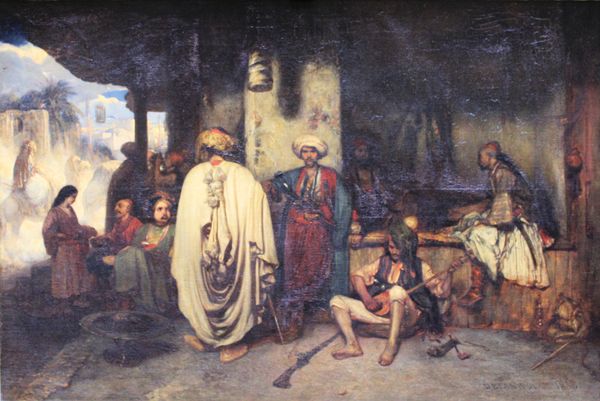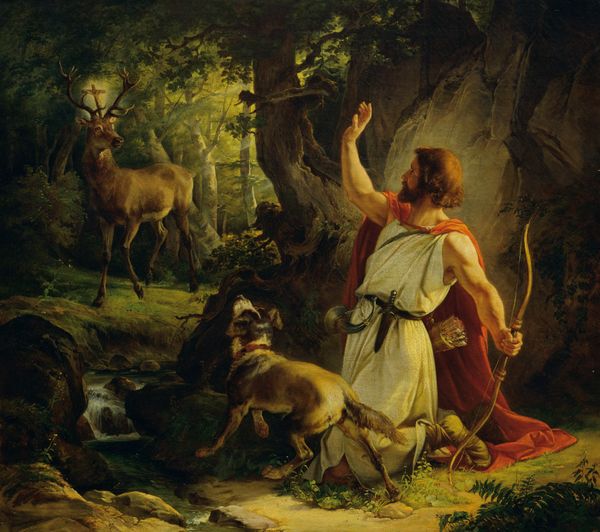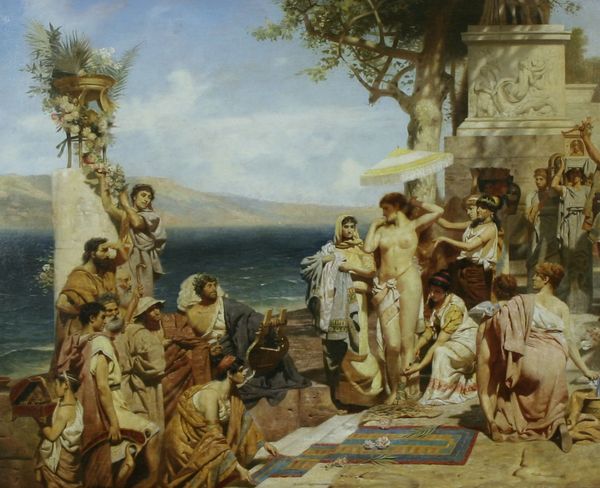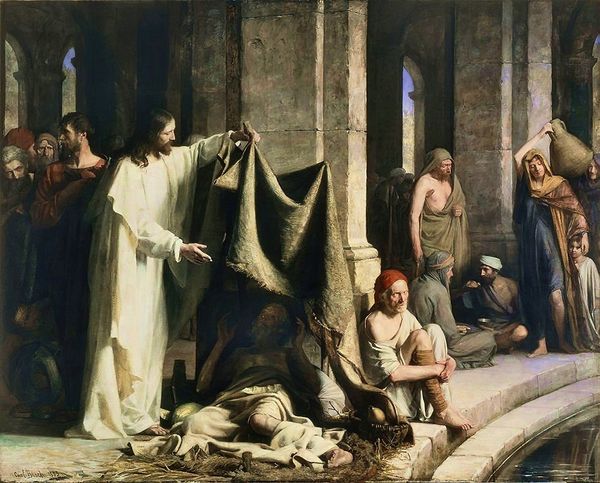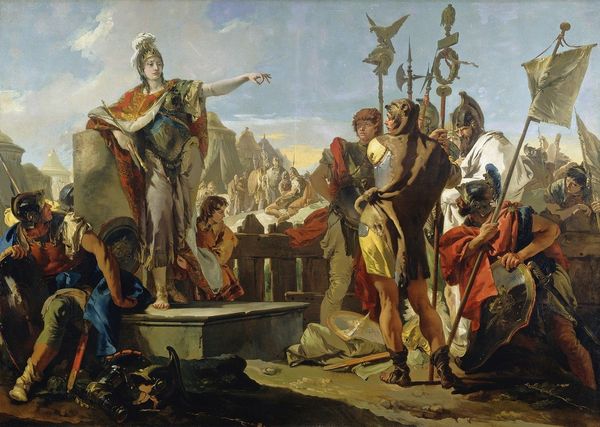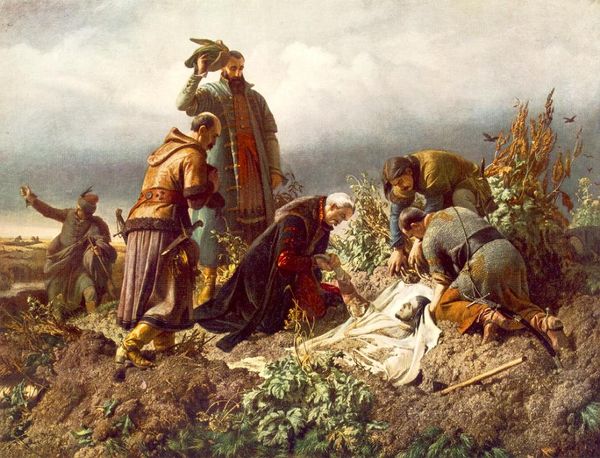
Copyright: Public domain
Curator: Here we have Fyodor Bronnikov's 1874 painting, "Consecration of the Herm." Editor: It's...idyllic, but something about the light feels almost staged, like a theatrical tableau. Curator: Indeed, the scene depicts a ritualistic act. Herms, those stone pillars topped with heads, were considered boundary markers and protectors, and this work portrays their dedication within the cultural life of ancient Rome. The figures in the painting appear to be common people but are enacting traditions passed down across generations. Editor: What strikes me first is the clear division of the canvas. The composition neatly separates the laborers from the observers. The left side is vibrant with activity, dark, earthen colors dominating. In stark contrast, the right presents a static group cloaked in white and cooler colors. Curator: Absolutely. Notice the contrast in attire between the group moving the Herm and the robed figure leading the consecration. The figures in darker tunics reflect the world of work, physicality, while the figures watching the scene suggests a formal religious importance. This highlights not just a religious practice, but also perhaps a social one? Who gets to labor versus observe and benefit. Editor: The light reinforces that contrast, almost dividing the scene into distinct spatial zones with a strong semiotic opposition, further dramatizing the visual tension. Curator: For me, these symbolic connections speak volumes about enduring traditions and how cultural beliefs weave themselves into our everyday lives. It invites us to reflect on the rituals, both sacred and secular, that we participate in even today. Editor: A fascinating contrast indeed. A division constructed from visual and chromatic components and the implications of class. It makes this scene quite unsettlingly picturesque.
Comments
No comments
Be the first to comment and join the conversation on the ultimate creative platform.
